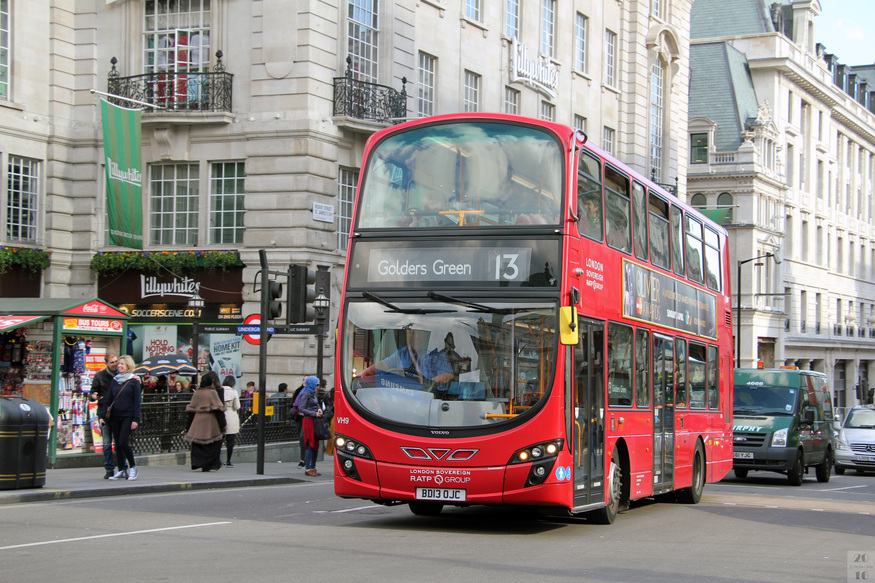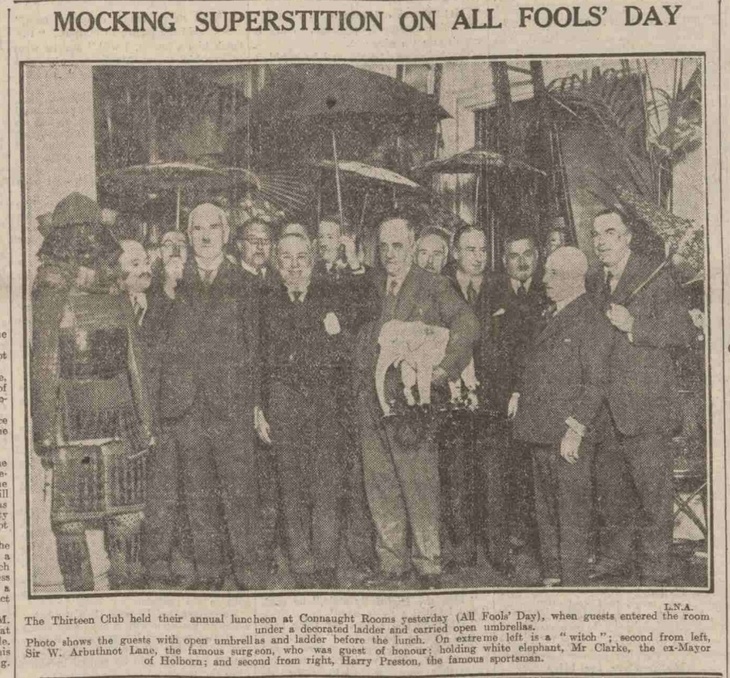
London is scared to death of the number 13. All over our triskaidekaphobic city, superstitious measures are in effect to ward off this 'unluckiest' of figures. Here, we take a look at London's nervous relationship with the number. For extra fun, we've peppered the piece with some 'unlucky' newspaper stories we found in the brilliant British Newspaper Archives.
Why unlucky?

The reasons for 13 being a number of ill omen are many and varied. Some link it back to the Last Supper (with Judas playing the role of the dinner guest no one really wants to invite). Another theory suggests 13's wretched origins relate to Friday 13 October 1307: the day King Philip IV of France ordered the arrest of the Knights Templar. Although this took place in France, the arrests soon spread across much of Europe, and eventually London's own Knights Templar were chucked out of their precinct (now known as Temple) by a reluctant Edward II. The knights were tortured, then either imprisoned or killed. At least their legacy is now marked in London with a Wetherspoon. Update: At least it was. Said Wetherspoon has now been closed down, which seems pretty... UNLUCKY (we're going to stop doing that now).

Things in London that don't have the number 13
Look, London's not TOTALLY triskaidekaphobic. There's a number 13 bus route, after all. But the city can be a little squeamish when it comes to using The Number That Must Not Be Mentioned (13). In his book London The Biography, Peter Ackroyd talks of the city's superstitious thoroughfares which don't have a 13; Fleet Street, Oxford Street, Park Lane, Praed Street, St James's Street, Haymarket and Grosvenor Street all eschew the dreaded number. Some buildings are superstitious: One Canada Square has no 13th floor. Then there's the London Eye, which has 32 capsules... numbered up to 33. Why's that? No capsule number 13, of course.

The Thirteen Club

The Thirteen Club laughed in the face of the dreaded digits. A spin-off of an American club of the same name/outlook, London's Thirteen Club was founded in 1890, and used to meet every 13 February at '13 o'clock', flagrantly disregarding the perils of dabbling with the number 13, and dubbing themselves 'the antidote to superstition'. According to The Great Wen:
"There were 13 dinner tables each with 13 settings and diners wore green ties with toy skeletons in their buttonholes. Meals were served by two cross-eyed waiters, who announced dinner was to start by smashing two mirrors."
The club also had a special meet up on All Fools' Day (1 April), and in 1930, members appeared on the front of Scotland's Evening Telegraph, standing outside London's Connaught Rooms, laughing in the face of superstition, by clutching white elephants, and opening their umbrellas, which they then took inside with them.
Only one member of the club had an untimely death. And he hadn't paid his fees. Hang on a second...

The baker's dozen

We've all the heard the phrase 'baker's dozen', and that it equates to 13, but did you know it has its roots in medieval London? With the introduction of the Assize of Ale and Bread in the mid-13th century, the Worshipful Company of Bakers had the power to impose severe punishments on bakers whose measures failed to live up to exacting standards like this:
By the consent of the whole realm of England, the measure of the king was made; that is to say: that an English penny, called a sterling round, and without any clipping, shall weigh thirty-two wheat corns in the midst of the ear, and twenty-pence do make an ounce, and twelve ounces one pound, and eight pounds do make a gallon of wine, and eight gallons of wine do make a London bushel, which is the eighth part of a quarter.
Rather than risk draconian punishments such as losing a hand, bakers gave away 13 loaves for every 12 sold. (This is one theory anyway — as with most of these things, a few are floating around.) So just as for the Thirteen Club, the 'unlucky' number was actually rather the opposite.
Superstitious dinner parties

In a nod to The Last Supper, let's finish on this.
If you're ever lucky enough to be invited to dinner at the Savoy — but unlucky enough to be joined by 12 other guests — there's a system in place. A 14th guest, by the name of Kaspar, will be given a seat at the table too. But don't worry, you won't have to foot his bill; Kaspar is a century-old art deco sculpture carved from a London plane tree, who usually lives in the Savoy's foyer. The tradition of calling on Kaspar to make up the numbers stems from 1898, when a guest dropped out last-minute from a dinner party for 14, hosted by diamond magnate Woolf Joel. When one of the guests suggested tragedy would befall the first person to leave the table, Joel brushed such superstition aside, and got up from his seat. A few weeks later, he was shot dead by a blackmailer. Following the episode, the Savoy had a member of staff join tables of 13, but that was frankly a bit weird. Then, in 1927, the architect Basil Ionides created Kaspar, and the problem/not really a problem was solved. The lucky black cat gets served the same food and drink as all the other guests.

Know of any London superstitions or oddities involving the number 13? Tell us in the comments.




